Barley agronomy results 2014
Author: Simon Craig (Agronomise Pty Ltd), Linda Walters (BCG), Mark McLean (Department of Economic Development, Victoria) and Rob Launder (AgriTech Rural) | Date: 24 Feb 2015
GRDC project code: DAN00173
Keywords: barley, management, head loss, weed competition, disease tolerance.
Take home messages
- Compass and Fathom have performed well and improved agronomics have made them attractive to Wimmera and Mallee growers.
- The effect of head loss in barley was minimal in 2014.
- Seasonal conditions were not favourable for disease, with only low level SFNB identified across the Wimmera and Mallee.
Background
As part of a GRDC funded tri-state initiative, BCG, DPI NSW, SARDI and SFS compared new barley lines with current varieties to determine whether specific management packages were required. Increasingly, variety specific management is an important consideration when deciding whether new varieties fit into particular farming systems. Hindmarsh is a perfect example of a variety that needs to be managed in a specific way in order to reach its yield potential. If recommended management options for this variety had not been adopted, Hindmarsh is unlikely to have become so widely grown.
For many, the 2014 season had mixed results and experiences. Crops in most regions experienced an early break, warm autumn, several frost events and a dry spring. Conditions were not favorable for foliar or stubble borne diseases. Of note, many growers struggled to achieve malt for various reasons – screenings, retention and protein were the main contributors.
This paper reports the performance of varieties at several BCG research sites with reference to additional information, available on the BCG website, complementing the findings.
Methodology
Trials reported in this paper are all based on replicated field trials (minimum of four replicates) conducted by independent grower groups and state agencies within the southern region. All trials were undertaken according to best practice unless it was the purpose of the trial or a specific treatment. Trials were statically analysed using Genstat 8th ed. using one or two-way ANOVA.
How did varieties perform in 2014?
In the Mallee, performance of varieties was consistent to previous years despite having somewhat different conditions such as an early break, several frost events and little disease pressure. Compass, Fathom and La Trobe have proved themselves as genuine replacements for Hindmarsh. Compass probably offers more over La Trobe in terms of yield, given both of these varieties are still undergoing malt accreditation. Fathom, a feed variety, yields well and has excellent resistance to spot form of net blotch (SFNB) and cereal cyst nematode (CCN). Its performance in 2014 was not as consistent as previous years, however it was still consistently higher yielding than other varieties (Figure 1).
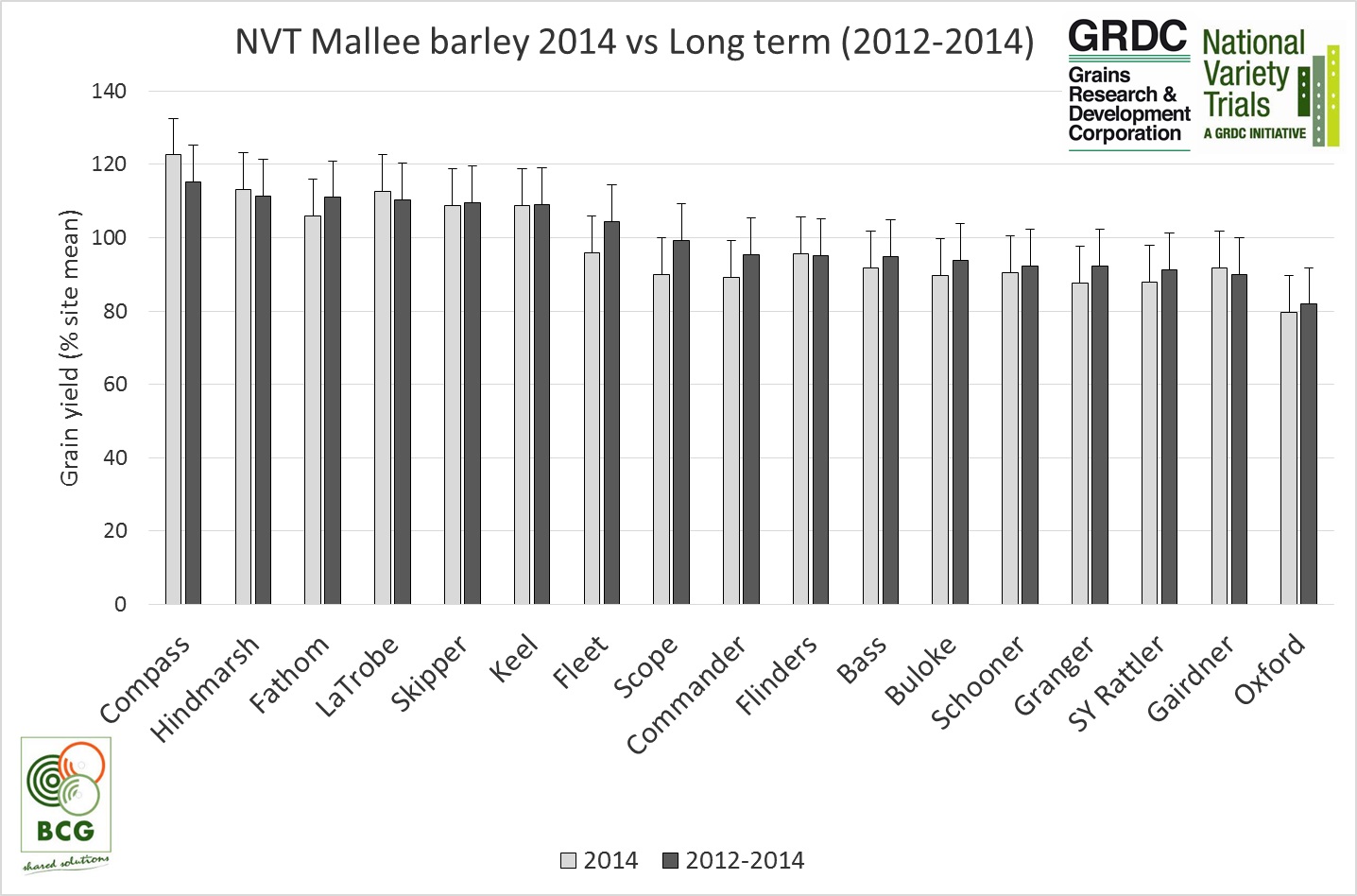
Figure 1. Performance of barley varieties in 2014 compared to previous seasons in the Mallee (NVT and BCG trials). Error bars presented represent the average LSD (10%) for each of the trials included.
In the medium rainfall zones (MRZ), varieties differed in their performance in 2014. Most evident was the improved performance of Bass, and the poor performance of Commander and Buloke/Scope (Figure 2). This highlights the value of comparing yields over multiple seasons. For example, identifying that the season potentially suited Bass over other varieties, but over the longer period those other varieties are still superior. No grain quality was available at the time this article was written.
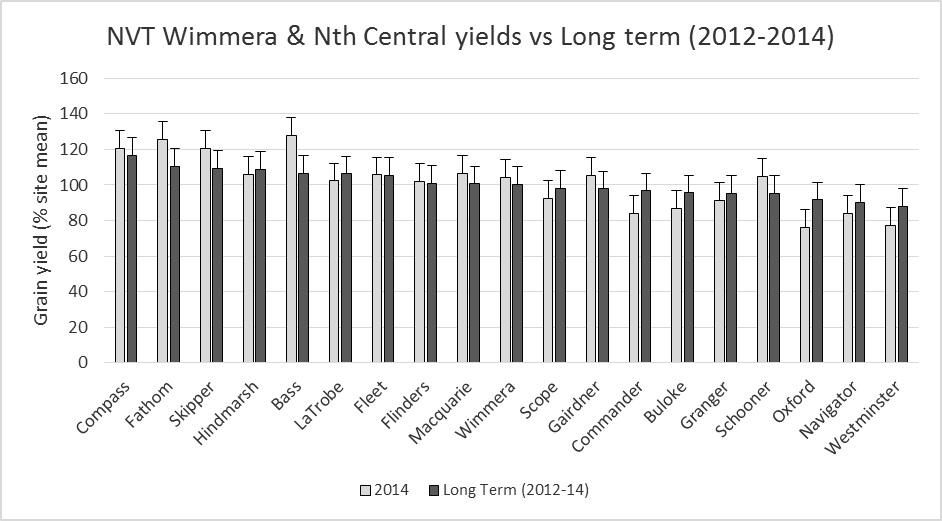
Figure 2. Performance of barley varieties in 2014 compared to previous seasons in the Wimmera and North Central Victoria (NVT and BCG trials). Error bars presented represent the average LSD (10%) for each of the trials included.
Weed competition
Growers and advisers are starting to have a greater preference for varieties that are more competitive against weeds than other varieties, and therefore taking the pressure off herbicides and assisting with managing herbicide resistant weed populations. A trial conducted by BCG in 2013 evaluated several barley varieties for their performance in the presence of weeds, which were simulated by broadcasting milling oats (Figure 3).
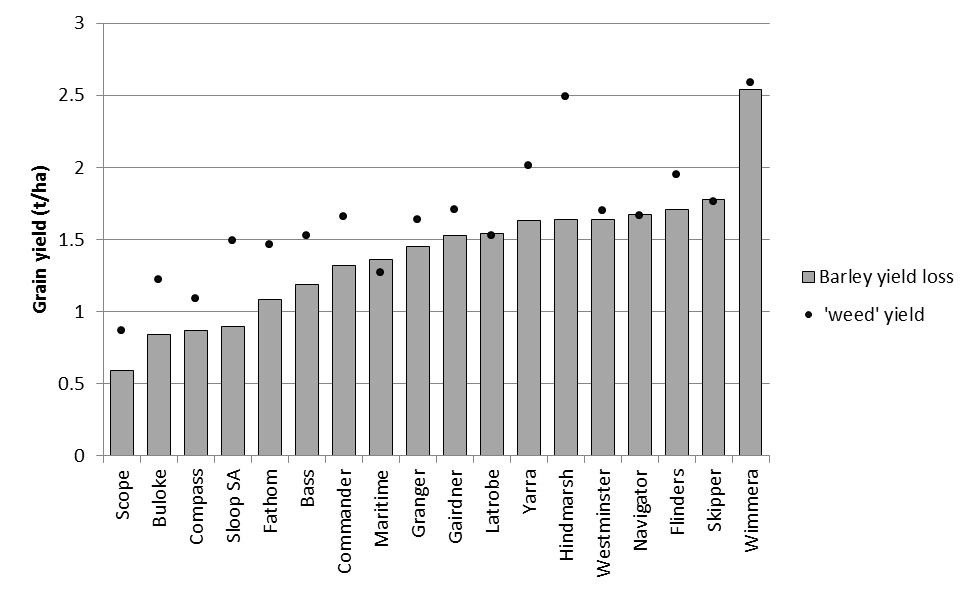
Figure 3. The grain yield loss and the weed yield for each of the barley varieties.
Figure 3 shows the yield loss of the varieties (bars) with the yield of the 'weeds'. It illustrates that Wimmera and Hindmarsh have the worst competitive abilty for reducing weed yields, while Scope, Buloke and Compass are very competitive.
Disease tolerance and susceptibility to SFNB
In 2013, SFNB was of concern for some advisers and growers. As part of the barley agronomy continued investigation, in collaboration with the Department of Economic Development (formerly DEPI Vic), varieties behaved as their disease raking would suggest (Figure 4), however there was no correlation to yield loss (Figure 5).
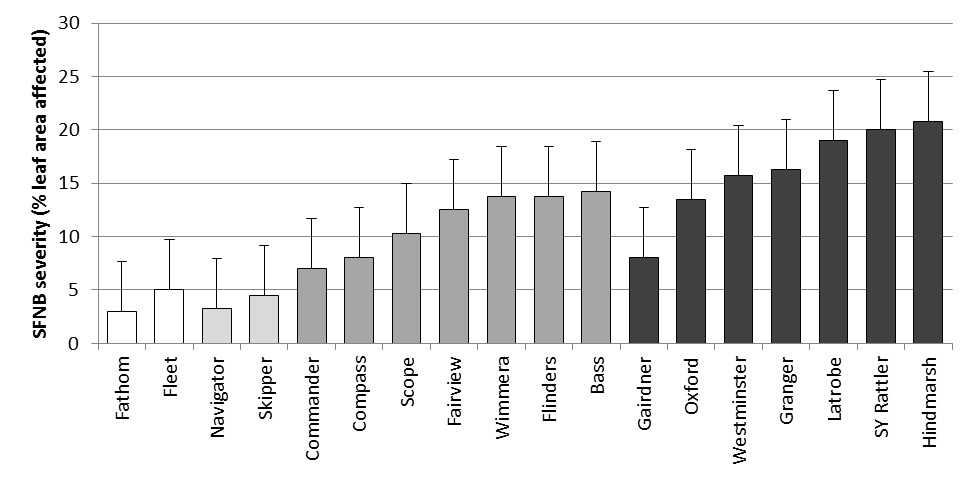
Figure 4. SFNB severity on percent leaf area affected (% LAA) at Horsham (Var P<0.001, Fungicide P<0.001, Var x Fung P<0.001, LSD 4.7%, C.V.39%).
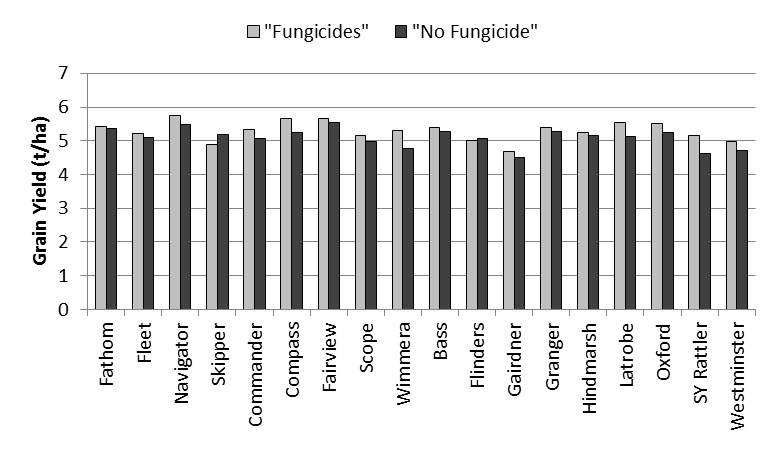
Figure 5. Grain yields for each of the varieties in 'Fungicides' and and 'No fungicides' plots (yields not significantly different between treatments: variety P<0.001, treatment NS; Varx treatment NS).
Delayed harvest and avoiding head loss
One of the frustrations experienced by growers when adopting a new variety is that they find the amount of head loss unacceptable. To avoid growers experiencing this, varieties have been evaluated when harvest is delayed. Key measurables are lodging, head loss, and brackling. Similar rankings in head loss were observed between 2013 and 2014 seasons (Figure 6 and 7). Both of these seasons did not result in substantial yield penalties.
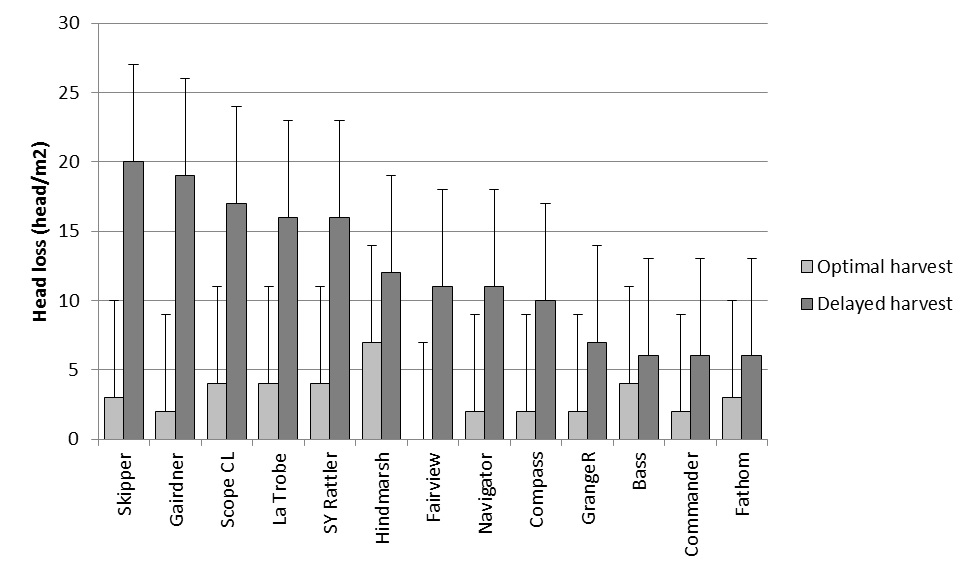
Figure 6. Number of heads (heads/m2) lost (after harvest) when delaying harvest in 2013. (Significant difference, Variety head loss x Harvest: P=<0.001, LSD=7 CV 64.5%).
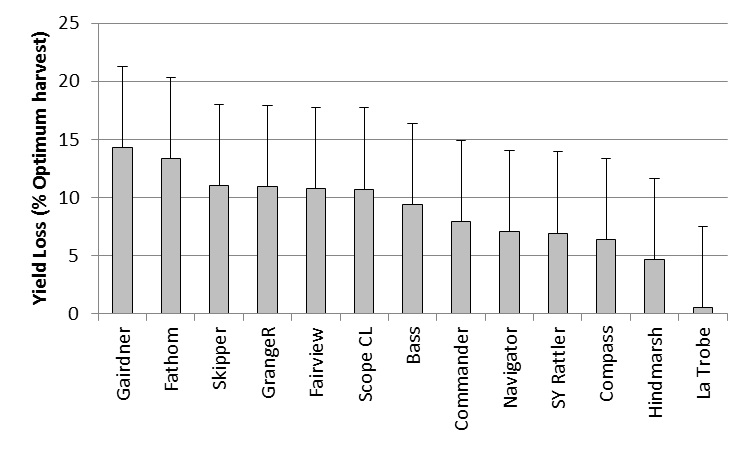
Figure 7. Mean number of heads lost following both harvest timings (P=0.005, LSD=2.1, CV 92.2%, there was no interaction between harvest data, thus the mean head loss is presented).
These trials support other states findings suggesting that La Trobe and Hindmarsh have little head loss while varieties such as Gairdner and Schooner are prone to dropping heads. Growers can use this information to help prioritise harvesting certain paddocks over another.
Conclusion
While grower inevitably place greater weight on yield performance over other characteristics, in the current case where there are several similar yielding varieties, growers now have a choice. Better understanding of these characteristics will lead to growers making the correct choices when it comes to varietal selection and the industry will find those varieties will stay in the system for a longer period of time.
Contact details
Simon Craig
Agronomise Pty Ltd
0428 922 753
simon@agronomise.com.au
@craigybcg
GRDC Project Code: DAN00173,
Was this page helpful?
YOUR FEEDBACK
